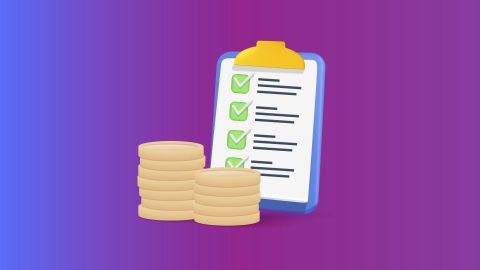Debt can be a significant financial burden for individuals and households. The debt snowball method is a debt reduction strategy that can help individuals pay off their debts more efficiently. In this article, we will explore what the debt snowball method is, how it works, and how it can help you get out of debt.
What is the debt snowball method?
The debt snowball method is a debt reduction strategy where you prioritize paying off debts starting from the smallest balance to the largest, regardless of interest rates. With this approach, you focus on clearing your smallest debt first while making minimum payments on larger debts. As each smaller debt is paid off, you gain momentum, like a snowball rolling downhill, leading to increased motivation and confidence in tackling larger debts. This method emphasizes the psychological aspect of debt repayment, providing a sense of accomplishment with each debt paid off, which encourages individuals to stay committed to their debt repayment journey. While it may not be the most financially optimal method in terms of interest savings, its simplicity and psychological benefits make it a popular choice for many seeking to become debt-free. If you are looking for a deeper understanding of corporations, consider how business structures can influence financial strategies.
How does the debt snowball method work?
The debt snowball method involves the following steps:
- List all your debts: Make a list of all your debts, including their balances, minimum monthly payments, and interest rates.
- Rank the debts: Order the debts from smallest to largest based on the outstanding balance.
- Determine your monthly payment: Determine your monthly payment by adding up the minimum monthly payments for all debts.
- Focus on the smallest debt: Use any extra funds that you have available to pay off the smallest debt while still making minimum monthly payments on all other debts.
- Repeat the process: Once the smallest debt is paid off, take the money that was being used to pay off that debt, and use it to pay off the next smallest debt until all debts are paid off.
The Business environment can have a significant impact on financial strategies like the debt snowball method, influencing how people manage and reduce debt.
Pros and cons of the debt snowball method
Pros:
- Psychological boost: By focusing on paying off smaller debts first, individuals experience a sense of accomplishment and motivation, which keeps them committed to the debt repayment journey.
- Simplicity: The method is easy to understand and implement, making it accessible to individuals who may feel overwhelmed by complex financial strategies.
- Quick wins: Clearing smaller debts quickly provides tangible results, creating momentum to tackle larger debts.
- Behavioral change: Encourages disciplined financial habits and fosters a mindset of debt reduction and financial responsibility.
Cons:
- Interest costs: The method may result in higher overall interest payments compared to strategies that prioritize high-interest debts first.
- Not financially optimal: Prioritizing debts based on balance rather than interest rate means potentially paying more interest over time.
- Longer repayment period: Larger debts may take longer to pay off, delaying overall debt freedom.
- Risk of demotivation: Some individuals may become discouraged if progress feels slow, leading to a loss of momentum in debt repayment efforts.
Debt snowball VS debt avalanche
Debt snowball and debt avalanche are two popular strategies for paying off debt. While the snowball method prioritizes paying off the smallest debts first for psychological motivation, the avalanche method focuses on tackling debts with the highest interest rates to minimize overall interest costs. The choice between the two depends on individual preferences, financial goals, and the ability to maintain motivation while considering the impact on interest payments.
Understanding the entrepreneurship approach to personal finance can help you choose the right strategy.
An example of the debt snowball
Imagine you have three debts:
- Credit card debt: Rs. 20,000 (minimum payment Rs. 500)
- Personal loan: Rs. 50,000 (minimum payment Rs. 1,000)
- Car loan: Rs. 100,000 (minimum payment Rs. 2,000)
Using the debt snowball method
Step 1: Focus on paying off the smallest debt first, the credit card debt.
Step 2: Make minimum payments on the personal loan and car loan.
Step 3: After paying off the credit card debt, allocate the freed-up ₹500 towards the personal loan, accelerating its repayment.
Step 4: Repeat the process until all debts are paid off.
Assets like cash flow and property can have an impact on how fast you are able to pay off your debts and save money.
How should you use the snowball method?
The debt snowball method is straightforward and effective for tackling multiple debts. Here's how to use it:
- List your debts: Make a list of all your debts, including balances and minimum payments.
- Order debts: Arrange debts from smallest to largest balance.
- Pay minimums: Make minimum payments on all debts except the smallest one.
- Attack smallest debt: Put extra money towards paying off the smallest debt.
- Snowball effect: Once the smallest debt is paid off, roll its payment into the next smallest debt.
- Repeat: Continue this process until all debts are cleared, gaining momentum with each debt paid off.
Green marketing principles can help individuals build a sustainable financial future while reducing debt.
Benefits of the debt snowball method
Here are some benefits of using the debt snowball method:
- Motivation: Paying off the smallest debt first provides a sense of accomplishment and motivation to continue paying off debts.
- Simplification: The debt snowball method is simple to understand and easy to execute, making it accessible to everyone.
- Improved cash flow: As debts are paid off one by one, there is more cash flow available to put towards more significant debts, leading to quicker debt elimination.
- Mindset shift: The debt snowball method helps shift the mindset from one of hopelessness and despair to one of empowerment and progress.
Navigating the path to financial freedom becomes less daunting with the debt snowball method. Whether you are dealing with personal debts or loans, this method empowers you to take control and make informed decisions about your financial future.
How effective is the debt snowball method?
The debt snowball method is highly effective for many individuals in reducing and ultimately eliminating debt. Its simplicity and focus on small victories provide psychological motivation, keeping individuals engaged and committed to their debt repayment journey. By starting with the smallest debt and gradually moving to larger ones, it creates a sense of progress and accomplishment, which can be instrumental in maintaining momentum. While it may not always be the most financially optimal strategy in terms of interest savings, its effectiveness lies in its ability to instill discipline, foster positive financial habits, and empower individuals to take control of their debt.
How to stay motivated working the debt snowball
Staying motivated while working through the debt snowball method is essential for maintaining momentum and achieving your financial goals. To stay motivated, track your progress diligently by keeping a record of each debt paid off and celebrating each milestone along the way. Visualize the benefits of becoming debt-free, such as financial freedom and reduced stress, to keep yourself motivated. Additionally, seek support from friends, family, or online communities to share your progress and receive encouragement during challenging times. Remember to reward yourself occasionally for reaching milestones, but ensure that these rewards align with your overall financial goals.




